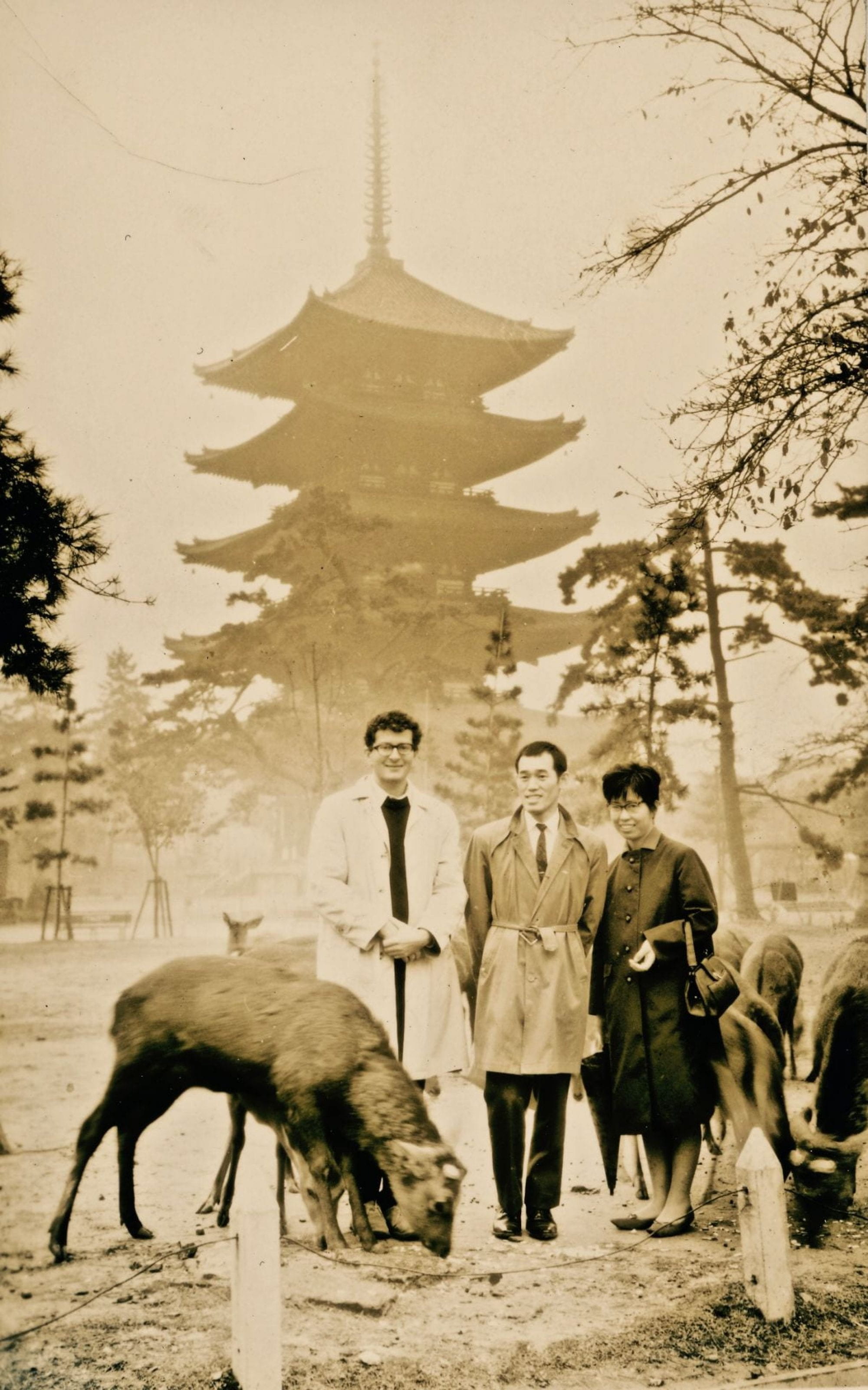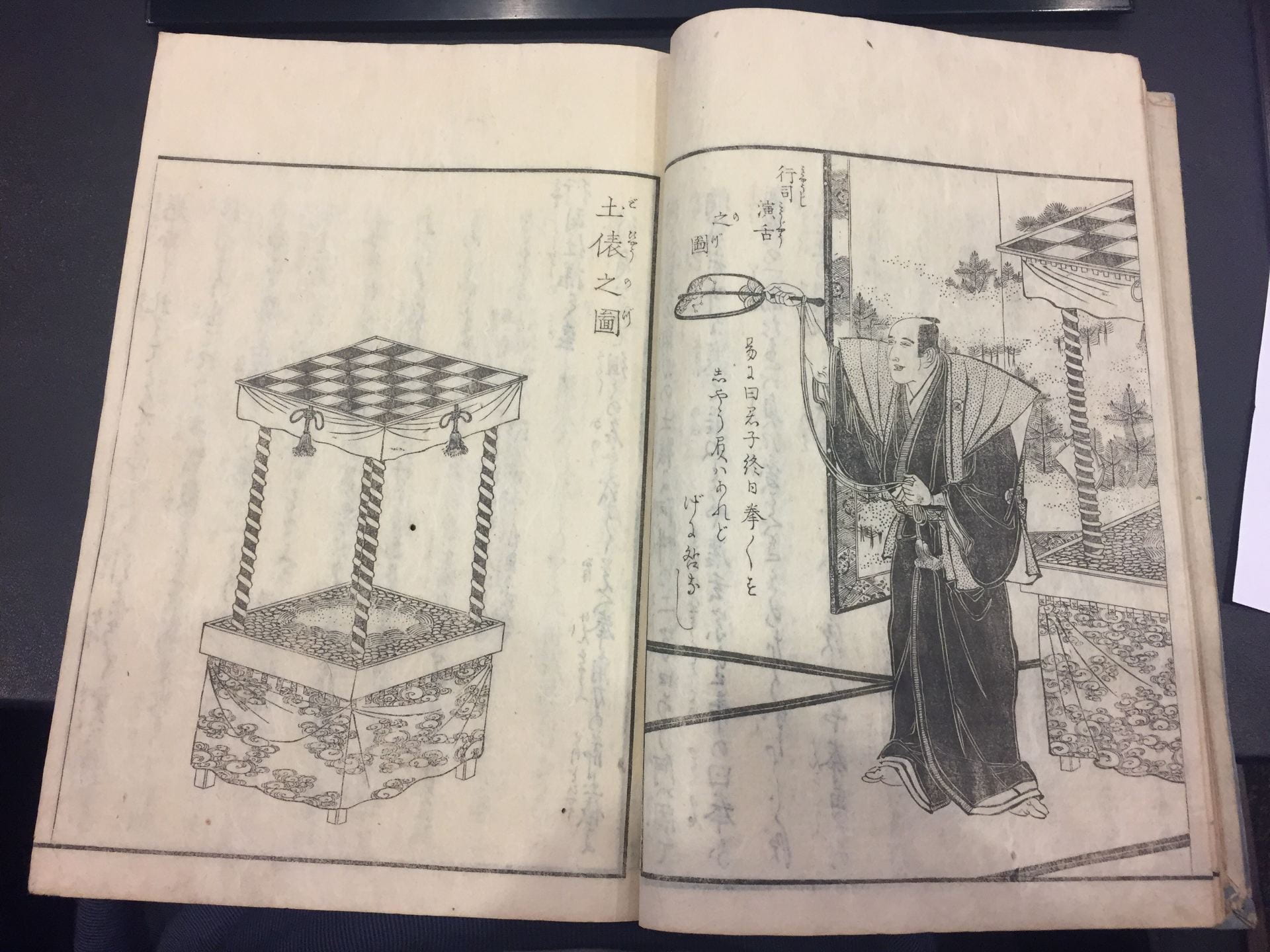Artist: Shōkōsai Hanbē 松好斎半兵衛 (active 1795-1807)
Authors: Girō 義浪 and Gojaku 吾雀
Title: Kensarae sumai zue 拳会角力図会 (Pictures of Sumo Hand Competitions)
Publisher: Kawachiya Tasuke 河内屋太助, Ōsaka
Date: 1809
Medium: Woodblock printed, ink on paper
Gift of Arthur Tress, Arthur Tress Collection, Box 29, Book 8
The hand gestures game called “janken” in Japan–and known as “rock-paper-scissors” abroad–is very well known today. It is often played by children and adults for fun as well as in competitions, perhaps over whose turn it is to do the dishes or to ride in the front passenger seat of the car. Hand gesture games were popular in the Edo period as well. But “rock-paper-scissors” is not as old as it seems–instead this variation evolved from others in the mid to later nineteenth century.
In this book published in 1809, we learn more about the popularity and the rules for “ken-asobi” (拳遊び) or “hand-gesture play” for earlier forms. These were often enjoyed as drinking games. Some were even styled after sumo wrestling competitions. In the opening pages of this book, Osaka artist Shōkōsai Hanbē shows participants and fans hurrying to the site of play, then packing into the hall to sit in small groups eating, drinking, and playing the hand gesture games.
Some hand-gesture games were styled as matches played around miniature wrestling rings, like the one shown in the illustration at the top of this post, in imitation of sumo wrestling competitions. These games were refereed by judges carrying fans, just like they did in sumo matches, and in the pages preceding this image, we learn more about the rules and the role of the referees. Some competitors became famous for their skill, as the list of names of players from Osaka, Kyoto, and Nagasaki at the end of the book demonstrates.
Two variations of hand gesture games are illustrated in another opening, with the pages preceding and following describing the terms used during the game. One variation used all five fingers, as seen on the right, in a game where each player selected a hand gesture for a number and then shouted a prediction for the total made by both players (see the essay by Linhart listed below).
On the left, we are shown the very popular variation with three distinct hand forms called mushi-ken (虫拳). This version featured three protagonists: the snake, the frog, and the slug. These animals were classed as mushi, a word often translated as “insects,” but this class of animals also included amphibians and reptiles in period taxonomies. This form of the game originated in China with the protagonists as the snake, frog, and poisonous centipede. The shift from centipede to slug in the Japanese version happened due to a misreading of the characters for centipede.
In the illustration here, the snake is performed by the index finger, the frog by the thumb, and the slug by the pinky finger. Each of these animals is afraid of being consumed by one of the others, so the snake wins over the frog, the frog over the slug, and the slug over the snake. Below the hand gestures, Hanbē has illustrated an item called a “kenkin” (拳錦) or a “competition brocade,” a cover that could be attached to the hand, presumably to hide the player’s hand movement while forming the gesture.
Games like these were played at home as well as in a variety of other locations. Images of the licensed brothel quarters often show clients and sex workers playing a game featuring a fox, a hunter, and the village headman. In that version, the wily fox outsmarts the village head, the village head bests the hunter, and the hunter trounces the fox.
This large format book features printing on fine paper. Mr. Tress recalls finding this book, volume one of two volumes, in 1970, on his second trip to Japan. For complete digitization of both volumes, see the example held in the Pulverer Collection (pulverer.si.edu).
Other copies:
Pulverer Collection: http://pulverer.si.edu/node/934/title
Berlin State Library (Staatsbibliothek zu Berlin)
University of Kyoto Library along with another seven libraries in Japan
Selected Reading:
Kitagawa Hiroko, “Commentary,” Kensarae sumai zue, The World of the Japanese Illustrated Book (http://pulverer.si.edu/node/934/title/1)
Linhart, Sepp, “From Kendo to Jan-Ken: The Deterioration of a Game from Exoticism into Ordinariness,” The Culture of Japan as Seen through Its Leisure, SUNY Press (1998), 319–344.
Posted by Julie Nelson Davis, August 24, 2020



